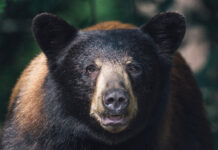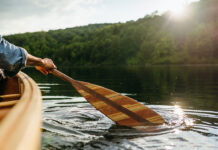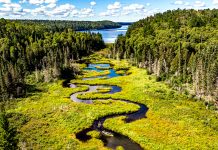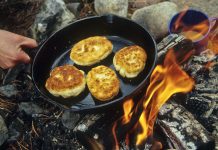Sigurd F. Olson said it best about the significance of good campsites.
“Campsites are punctuation marks for the voyageur, signifying the end of the day. I may forget portages, rapids, and lakes, which merge into a nebulous montage of the country traveled over, but there are some campsites that stand out vividly in my mind as special places remembered.”
Campsites are the centerpiece to every canoe trip
Many wilderness canoeists will agree with Olson’s sentiments. Campsites are the bookends to our days outside, the centerpiece to every canoe trip. They are where the day’s stories are shared, laughs are had and breakfast and dinner are eaten.
It’s where we view the stars from, and where we’re at our most vulnerable while asleep. Campsites are more than a patch of ground to lay our heads.
I’ve loved my fair share of wilderness sites. From the beautiful remote beach on Woodland Caribou’s Burg Lake to the skinny-dipping paradise of Killarney Provincial Park’s aquamarine Nellie Lake.
Then there’s that giant pine site on Quebec’s Dumoine River. Yes, there are lots of giant white pine campsites, I just love the gnarled branches on this one the best.
History plays a part in some of my favorite sites. Aldo Leopold used a survey marker as a tent spike along the boundary of Quetico and the Boundary Waters Canoe Area, at Lower Basswood Falls. You can use the same spike as a peg today.
I have camped among the hoodoos along the Milk River, all decorated with First Nation petroglyphs and the French River’s Blue Chute where Canada’s great explorers and voyageurs made camp. There’s also Best Island in Wabakimi Provincial Park where Wendell Beckwith built a series of cabins to study mathematical theories, including the existence of pi.
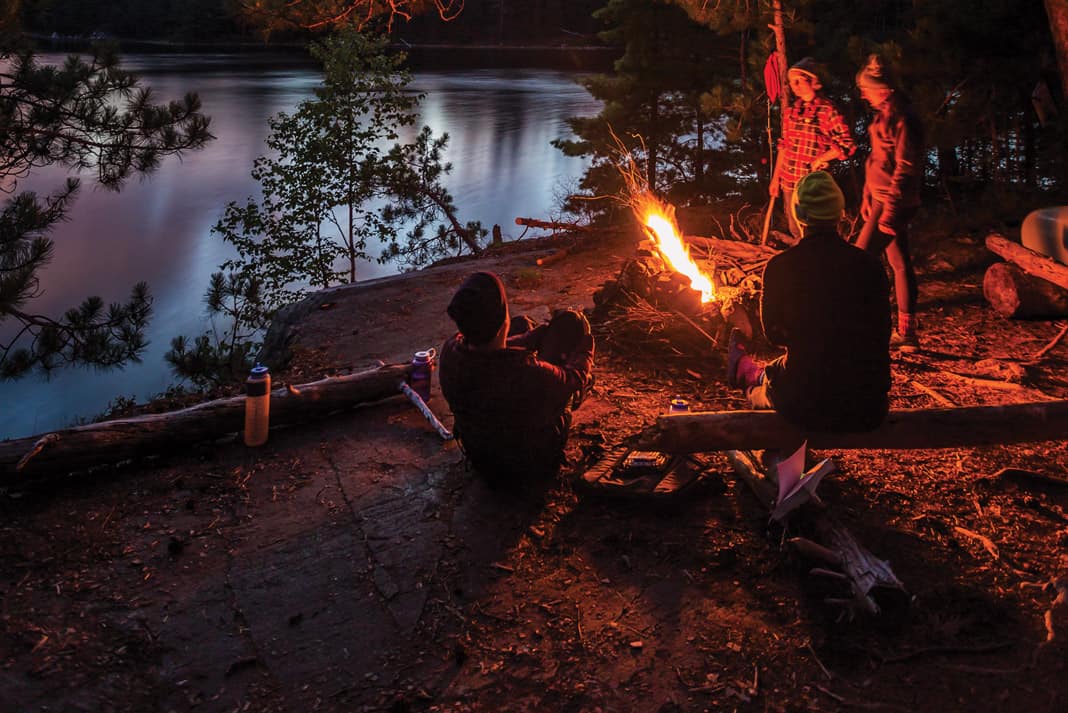
Canoe trip campsites are where memories are made
Campsites are where many of my wilderness memories take place. A sheltered nook on Crab Lake in the Kawartha Highlands where my daughter camped for the first time at six weeks old.
A spot amongst the pines on Noganosh Lake where I took my dad on a fishing trip a few months before his death. My favorite solo island site on Old Woman Lake where I get away to think.
There are countless reasons why a campsite gets five stars from me, and a bed of soft pine to pitch a tent on and a sandy beach to swim at are just two.
According to researchers, once campers have their basic needs met—a spot for a tent, access to water—we prioritize experience attributes. That could be a high rock for cliff jumping, a west-facing shore for beautiful sunsets or a big flat rock for stargazing.
The attributes prioritized are based on personal preference, but I’ve never met anyone who’s complained about a scenic vista unfolding in full view of the fire ring. Low down on the third rung are backcountry amenities—a comfy log by the campfire, trees for hanging a tarp or a scenic thunderbox.
Campsites can feel like home
What’s much harder to study and quantify scientifically is the instinctive home-and-hearth feeling a campsite with shelter creates. Even 10,000 years after the dawn of the agricultural revolution and permanent dwellings, the nomadic campsite is instantly recognizable as a refuge. One small square of the earth to call our own and rest our weary heads upon, dreaming about what the next day’s adventure holds.
Olson was right: Campsites are the punctuation marks in any journey. Whether an exclamation point or simple period, they make our journeys complete.
When we spend our days paddling through lakes and rivers we are visitors on the land. But at night—at camp—for just a little while, we’re home.
Kevin Callan’s Butt End is a regular column in Canoeroots magazine. Kevin is the author of 15 camping and canoeing guidebooks.



